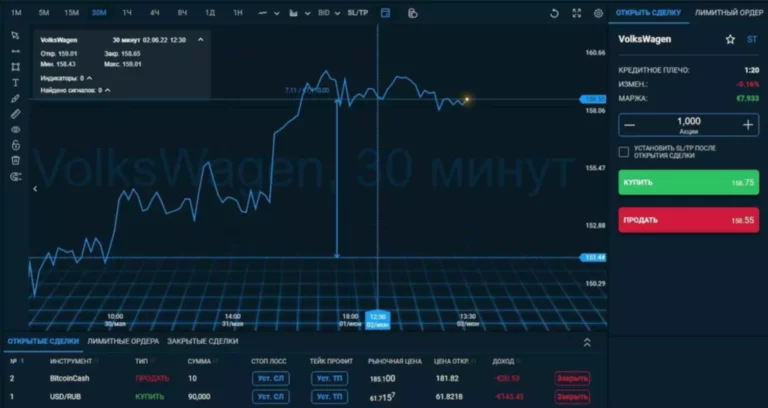The fixed pressure to beat the market, make sensible selections, and deal with potential losses, can lead to nervousness, stress, and emotional decision-making. Influenced by market sentiments, investors may also observe the crowd active trading vs passive investing, resulting in herding behavior. Active managers are free to purchase any funding that they assume would provide greater returns.
Finest Ship Constructing Shares In India

Despite thorough analysis and evaluation, they could not have entry to the same level of data as market insiders. Thus, they should rectify this informational problem, which might put them at a larger threat. Passive funds don’t rely on the skills and choices of the fund manager, and therefore, they remove supervisor risk and bias. Since passive funds replicate the composition of the benchmark index, they also get rid of security selection threat and high turnover danger. Passively managed funds tend to follow the weighting methodology of the benchmark index, which may not always be aligned with an investor’s threat tolerance and preferences.
What Are Active And Passive Mutual Funds?
If the selected investments underperform, the complete portfolio might suffer drastic losses. In distinction, if buyers generate a diversified portfolio, they are more prone to face up to extreme market conditions as a outcome of the losses in a single area may be balanced by positive aspects in one other. Active investing is definitely not for individuals with weak hearts, restricted time, and confined experience. Successful active investors need to constantly analysis, evaluate, and monitor their investments to remain forward of market trends.
5 What Threat Do Passive Funds Eliminate?

For more details on danger components, terms and situations please learn gross sales brochure & policy doc (available on ) carefully before concluding a sale. The aim is to get higher returns, diversify investments, and decrease danger by specializing in certain components instead of just market capitalization. Accessing a broad range of mutual fund choices has by no means been simpler, thanks to Axis Bank’s web banking or cellular banking app. With only a faucet, you probably can discover a plethora of mutual funds and make knowledgeable investment decisions conveniently from the consolation of your personal home.
Investment Crossroads: Energetic Vs Passive Investing
Both lively funds and passive funds come with their own distinct professionals and cons, and neither is better as an funding than the opposite. Ultimately, the choice to put cash into active or passive funds is dependent upon what your monetary goals, risk tolerance, and investment horizon are. While passively managed funds also have a fund manager who takes care of the fund’s portfolio, their role here is minimal. They don’t undertake energetic stock selecting or asset allocation, because the portfolio is constructed to replicate the chosen index. For instance, an S&P 500 index fund would come with all of the shares that the S&P 500 market index holds (with the quantities of the shares probably being decided utilizing a criterion similar to market cap).
The phrases and circumstances of product/plan as contained in the Policy Document issued by the Company is out there on the Web Site. The names of the Company, Products/Plans/funds do not point out the quality and its future prospects or returns. IN ULIPs, THE INVESTMENT RISK IN THE INVESTMENT PORTFOLIO IS BORNE BY THE POLICYHOLDER.
A plan that provide assured returns and financial safety for your beloved ones.
Lively Vs Passive Funds: Understanding The Difference
Ultimately, the choice between passive funds vs energetic funds is decided by an investor’s unique financial situation, targets, and investment philosophy. Active investing presents the potential for greater returns and flexibility, while passive investing provides a cheap, lower-risk strategy with consistent market returns. One effective methodology to combine energetic and passive investing is the core-satellite method. This technique entails constructing a steady, diversified «core» portion of your portfolio utilizing passive investments, such as index funds or ETFs. The core is designed to supply broad market exposure and consistent, long-term returns with low prices and minimal administration.
While a passive fund might occasionally outperform the market, it will never obtain the significant returns sought by energetic managers until the market itself booms. Passive investing refers back to the funds that the fund supervisor is passively managing. In this sort of investment, the insurance coverage firm takes ownership of all the coverage and plan matters and manages the methods themselves. If you’re trying to invest for the long run, passive funds of all kinds virtually always outperform. Over a 20 year period (in US market), index funds monitoring corporations of all sizes are recognized to beat their practical equivalents (active investments) by around 90%. Yes, passive funds are appropriate for both novice and skilled investors on the lookout for a low-cost, long-term funding strategy.
Passive investing means a method that involves buying and holding stocks for the lengthy run. The goal of passive investing is to move with the markets and generate returns which might be on par with benchmark indices like Nifty 50. But retail investors who wish to construct an actively managed portfolio should do all of this on their own. This is likely one of the reasons why working professionals favor to follow a passive investing technique. As you presumably can tell, there’s a high degree of monitoring, analysis, and trades involved. That’s why actively managed mutual funds and portfolio managers are known to charge a comparatively excessive fee.

Choosing the proper investment strategy could make an enormous difference to your financial development. Three frequent investment strategies are lively investing, passive investing, and smart-beta investing. The debate about energetic investing vs. passive investing is a endless one. However, understanding about these methods will help you make higher selections that support your monetary goals.
- In common, energetic funds could additionally be more suitable for investors who are prepared to take larger risks, search greater returns, have an extended time horizon, and can afford larger fees.
- Active buyers engage in hands-on stock selection, making strategic selections to surpass market performance.
- By holding high quality belongings for longer time intervals, we are counting on letting compounding returns present long run benefits.
Active cash administration seeks to outperform the inventory market’s average returns and capitalise on short-term value swings. It requires a extra in-depth examination and the ability to determine when to enter or exit a particular inventory, bond, or another asset. Typically, a portfolio manager supervises a staff of analysts that analyse qualitative and quantitative features and then peer into their crystal balls to forecast the place and when the worth will change. A passively managed portfolio is a collection of securities that are designed to replicate the performance of a benchmark index, such because the Nifty 50 or the Sensex.
Manu manages the financial affairs of greater than 70 households, specializing in tax, property, funding, and retirement planning. She crafts customized strategies that cater to both quick and future targets, prioritizing belief and relationship-building in her method. Whether you decide between passive or lively portfolio administration comes down to what you personally like, how much threat you are okay with, and what you wish to do along with your investments. Passive management aligns better with risk-averse buyers, whereas active management is more fitted to people who’re keen to tackle higher risk for doubtlessly larger rewards. Passive administration is suitable for long-term investors that need steady growth at decrease prices.
SPIVA, brief for S&P Indices versus Active, is probably considered one of the most detailed stories on the subject. This examine has been ongoing for 20 years and takes place in nine different international locations, offering insights into how the funding world adjustments over time. It appears into regions like Latin America, the United States, Canada, Europe, the Middle East, North Africa, South Africa, India, Japan, and Australia. SPIVA checks over one hundred investment classes and publishes a analysis report twice a 12 months, making it a go-to source for each traders and monetary experts.
Selecting between energetic and passive investing is an important alternative that is decided by a quantity of elements, together with financial goals, threat tolerance, and investment timeline. Active investing supplies the chance for larger returns by way of market evaluation and frequent trading, however it comes with elevated dangers and costs. In contrast, passive investing supplies a more straightforward, cost-effective strategy to replicate market efficiency, providing stability and decrease charges.
Read more about https://www.xcritical.in/ here.
Deja una respuesta